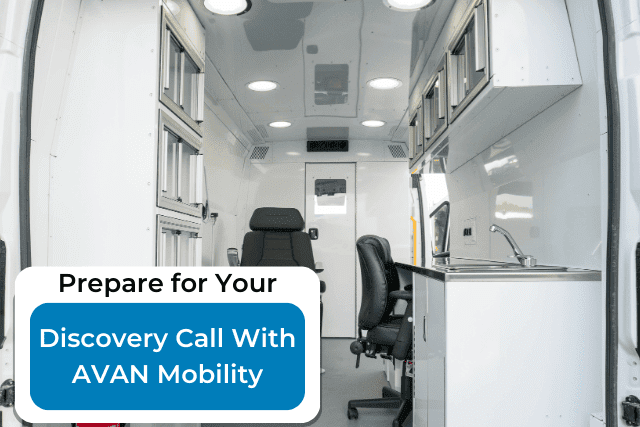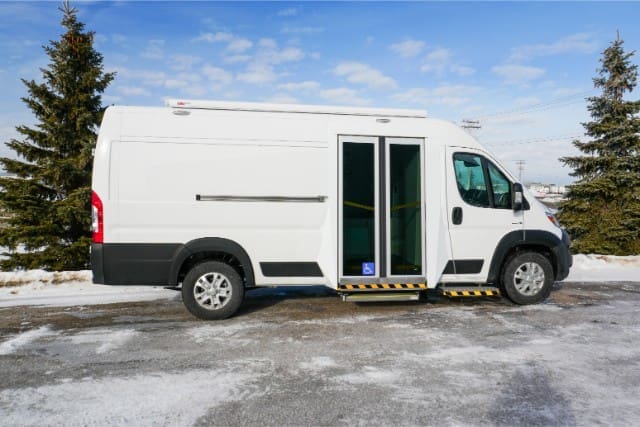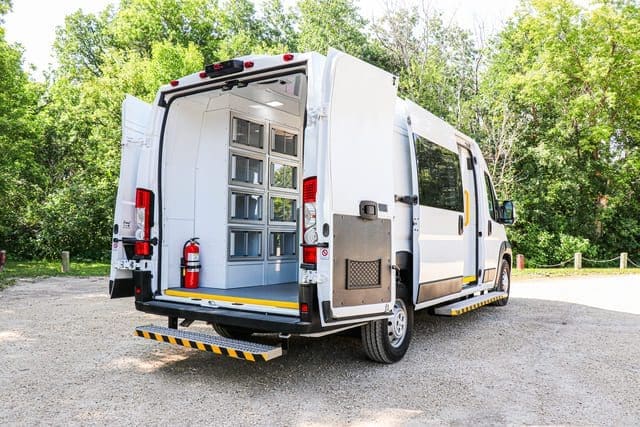Thinking about adding a new mobile medical unit or wheelchair accessible van to better serve the community? It’s exciting, but it can feel confusing. A discovery call can help make sure you’re on the right track and answer some of these questions:
- How will it help your patients?
- What do you need to get started?
- Are you even asking the right questions?
It’s normal to feel a little unsure. You’ve probably done some research and seen lots of options. Now, you’re getting ready to talk to a mobility expert. You want to make the most of this call without feeling rushed or forgetting something important.
This guide will help you prepare for your discovery call with AVAN Mobility. It’s packed with questions you might not have considered, so you’ll feel confident and prepared to move forward.
At AVAN Mobility, we help organizations like yours bring healthcare and transportation to people who need it the most. For over a decade, we’ve been designing custom mobile medical units and wheelchair vans that make healthcare and transportation more accessible. From small towns to big cities, we’ve worked with groups across the U.S. to improve how people get care.
We’ve helped build mobile clinics in rural Missouri and Costa Mesa, as well as outreach units for Siskiyou County in California to better serve their communities. No matter where your organization is in the U.S., we focus on solutions that truly make a difference for patients and providers.
In this article, we’ll go over:
- What to expect during your discovery call with AVAN Mobility.
- Important questions to think about before your call.
- Simple steps to get ready so you can make the most of your time.
Let’s dive in and make sure you’re set for success!
AVAN Mobility discovery call: What does it involve?
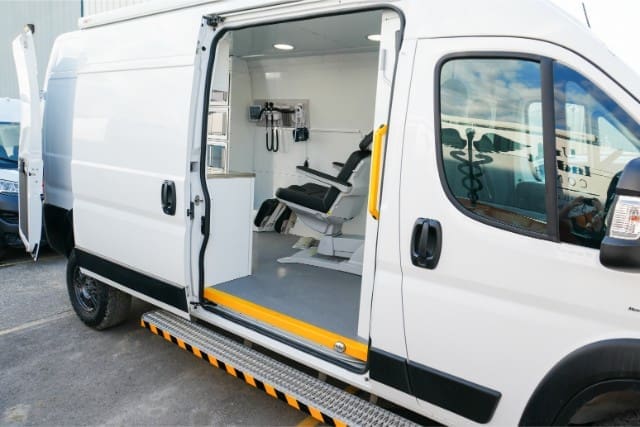
A discovery call is a simple conversation between you and an AVAN Mobility expert to talk about your organization and community and how a mobile medical unit or wheelchair van can make a difference.
We’ll ask about your goals, challenges, and how you plan to use the unit to serve patients. This step is important because it ensures we design a solution that fits your specific needs, whether you’re in a busy city like Atlanta or a small rural town in Kansas.
A discovery call is about learning what’s important to you so we can create something that works. We’ll discuss things like:
Your daily routine: How do you serve your patients/clients now? Are you helping people in underserved areas like Native American reservations or rural farming communities? Maybe you already have a mobile unit and are looking to add another one, or perhaps this is all new to you.
Your goals: Are you looking to offer new services, like preventive care or mental health support? Maybe you want to replace aging wheelchair vehicles or expand to serve more patients.
This call helps us focus on what matters most to your organization and the people you serve.
Be prepared to answer these questions in your discovery call
Getting the most out of your discovery call starts with being ready to answer a few important questions. These help us understand your needs and match you with the best solution:
- Mobile Clinic Van
- Mobile Counseling Van
- Mobile Outreach Van
- Mobile Overdose Prevention Van
- Mobile Response Van
- P4 or P5 wheelchair Van
Let’s break it down.
1. What does a day in the life look like for your organization?
Picture your mobile healthcare team on the road, helping patients. What kinds of tasks are you handling daily? Are you offering gurney transportation, mobile dental care, or outreach services? Or, are you running a bustling urban handi transit program?
Here’s what to think about:
- How long do you spend with each patient?
- What types of treatments or services do you provide?
- What type of equipment do you use?
- Do you need a fridge or sink?
- How much storage space will you need?
This helps us design a customized layout that keeps things running smoothly. From exam tables to storage cabinets, every detail can make a big difference in your workflow.
2. What’s the biggest problem you’re trying to solve?
Why are you considering going mobile? Identifying your main challenge helps us tailor the conversation to what matters most.
Some common challenges include:
Reaching underserved areas: Many rural communities across the U.S., from Appalachia to the Great Plains, lack access to basic healthcare.
Managing high patient volume: Are your existing facilities overwhelmed?
Specialized care needs: Do your patients need services like addiction treatment or IV therapy?
Sharing your top challenge gives us a clear direction for designing the perfect solution.
3. At what point are you starting from?
Take a step back and look at your current setup. What’s not working, and what’s holding you back?
Ask yourself:
- Are you stuck in a location that’s hard for patients or clients to reach?
- Are resources like staffing or funding limited?
- Is scaling up to meet demand a challenge?
Knowing what point you’re starting from helps us recommend features that overcome these barriers, like advanced telehealth equipment or extra storage for medical supplies.
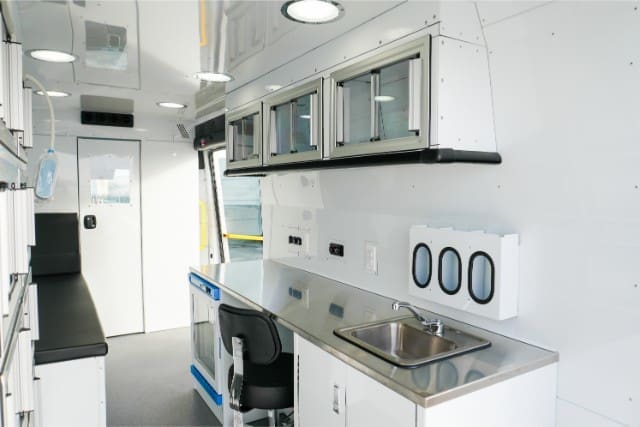
4. How many patients do you expect to serve?
How busy will your mobile medical or transportation program be? Are you planning to see 10 patients/clients a day or closer to 50? Having a rough estimate is key to recommending the right van size and layout.
For example, if you plan on serving densely populated cities like New York or Los Angeles, this will give us a better idea of what layout to suggest compared to if you were only providing healthcare in rural areas.
5. How far will your mobile unit travel?
Think about the region you want to cover. Will you be driving across flat, open highways or navigating through urban neighborhoods?
Consider these details:
Travel distance: Are you covering an entire state, like Montana, or focusing on a single city, like Dallas?
Terrain: Will you face dirt roads, snowy conditions, or rugged trails?
Community needs: Are you serving hard-to-reach places, like Native American reservations or remote agricultural areas?
This helps us recommend the right van, like our Trail Edition Upgrade, perfect for tough terrain and long-distance travel.
6. What’s your vision for going mobile?
Think big: What would success look like with your new mobile medical unit or wheelchair van? Maybe it’s offering mental health services in underserved areas, like parts of the Mississippi Delta. Or perhaps it’s reducing wait times in busy clinics in Chicago.
Share your goals:
- Which communities or areas do you hope to serve?
- What new services do you want to offer?
- How will this program impact patients and your organization?
Having a clear vision helps us recommend features that fit your short-term needs and long-term plans.
Your path to a successful mobile medical program
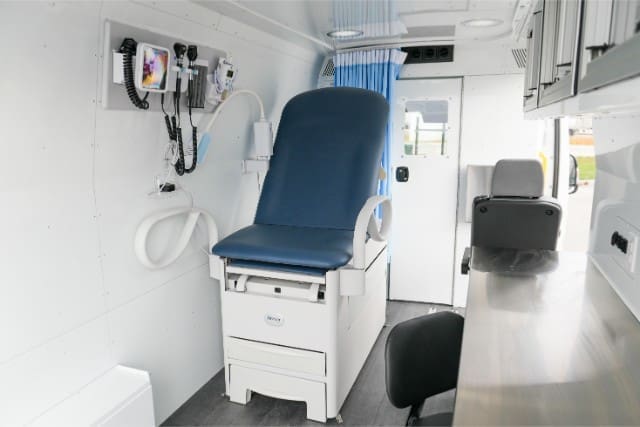
You came here looking for advice on how to prepare for your discovery call with AVAN Mobility. After reading, you now know how to identify your main challenges, outline your vision, and prepare to start talking about your plans. We hope this article has helped you feel more confident about the process going forward.
At AVAN Mobility, we understand that bringing healthcare on the road can feel like a big leap. But you’re not in this alone. If you’re trying to reach families in rural Alabama or provide critical services in busy neighborhoods like those in New York City, we’re here to help. We’ve worked with organizations just like yours, figuring out the details together and turning big ideas into real, life-changing programs.
You know your community best, and we’re here to listen, guide, and build a solution that fits your vision. If you’re ready to take the next step, click the button below to connect with a mobility expert who can answer your questions and help you move forward.
